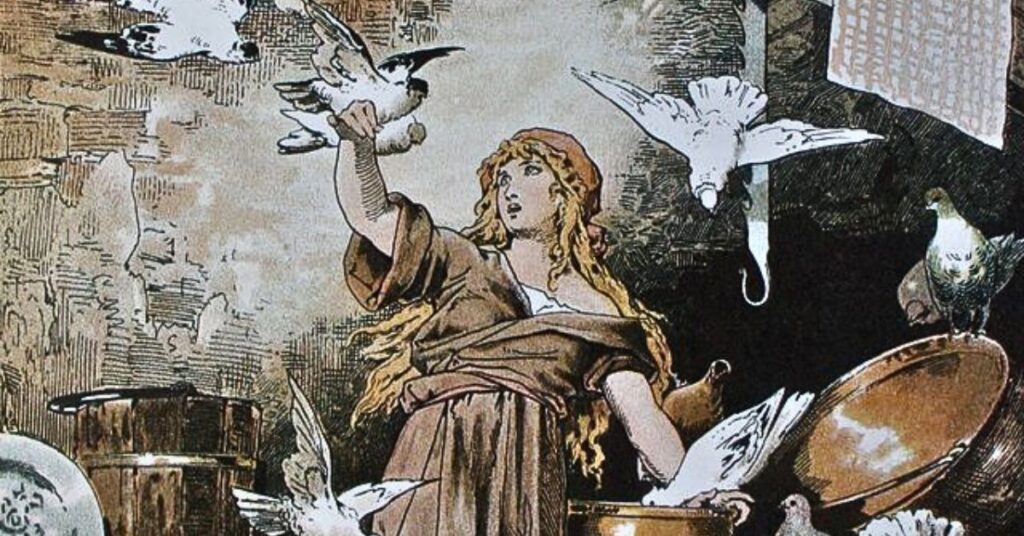By Christa Protano
Do you believe in fairy tales? Personally, I tend to lean in to the romance of it all, having been raised on a certain magic kingdom’s ideology that everyone gets their happily ever after. As a little girl, I even had a life-size mural of Snow White and her seven dwarfs wallpapered on one whole side of my bedroom. If I knew then the original story of the Brothers Grimm’s Sneewittchen, I may have had a very sleepless childhood. That’s because some of the most popular “fairy tales” of our time started out with a very different vibe—a vibe that doesn’t really lend itself to bedtime stories.
Published in 1812, the collected works of brothers Jacob and Wilhelm Grimm was comprised of almost 200 fables, short stories, parables and the like. Put down on paper by these two German scholars, Grimm’s Fairy Tales created a permanent record of the country’s folklore to be enjoyed by readers of all ages. But despite some of their familiar titles, the original works had a more grim tone, if you will. These stories are a little more dark and often don’t end on a happy note, but some may say they are far more interesting. Perhaps that’s why the entertainment industry and other creative icons have turned to the brothers for inspiration. Here’s a look at the Brothers Grimm’s enduring impact on pop culture.
The Disney Spin
Leave it to the mouse’s house to put a positive spin on these otherwise dark tales. From Cinderella and Snow White to Rapunzel and Sleeping Beauty, the beloved Disney Princess got her start in the works of the Brothers Grimm. Thanks to Disney, they all lived happily ever after, too. If it were left up to Jacob and Wilhelm, Cinderella’s step sisters would have literally cut off their toes to fit into that glass slipper (later, they both have their eyes pecked out by birds because of their cruelty). Likewise, the Disney version of Snow White and the Seven Dwarfs ends innocently enough with the prince awakening Snow White with a kiss. In the original story, the Brothers Grimm have the evil queen attend their nuptials and dance to her death in a pair of red-hot iron slippers…talk about revenge!
Now available as part of the Word Cloud Classics series, Brothers Grimm: 101 Fairy Tales is a must-have addition to the libraries of all classic literature lovers. Many of these stories begin with the familiar refrain of “once upon a time,” but end with something unexpected and fascinating.
The Small Screen Treatment
Starting in the 2010s, the dark side of these fairy tales finally got its moment in front of the TV cameras. Debuting on the CW, Grimm followed fictional homicide detective—and Grimm descendant—Nicholas Burkhardt over six seasons as he battled mythical monsters called Wesen (German for “creature”) that were loosely inspired by the original folklore.
And just this past spring, Netflix debuted the anime anthology The Grimm Variations. The series, intended for mature audiences, includes six episodes featuring Little Red Riding Hood, Hansel and Gretel, the Pied Piper of Hamelin and more—all with a shadowy twist, of course.
The Brothers Grimm Volume 2: 110 Grimmer Fairy Tales comes with a heat-burnished cover, foil stamping, luxurious endpapers, and a smaller trim size that’s easy to hold. This chic and inexpensive edition includes more intriguing stories about “Wise Folks,” “The King’s Son Who Feared Nothing,” and…well…“Donkey Cabbages” to name a few.
The Taylor Era
We all know Taylor Swift loves to pepper her songwriting with many a literary allusion, and the Brothers Grimm are no exception to her musical repertoire. While the superstar is living her own personal fairy tale at the moment, Jacob and Wilhelm were influencing her lyrics long before a certain tight end came along. In “Best Day” on 2008’s Fearless, Taylor wonders about the location of Snow White’s house and references her Seven Dwarfs. More recently, she sings a line about being locked up in a tower, a la Rapunzel, in The Tortured Poets Department’s “The Albatross.”
Like the memorable artwork of a Taylor Swift album cover, this Crafted Classics edition of Brothers Grimm: 101 Fairy Tales is one to be cherished thanks to decorative embroidery that gives the book a unique, handcrafted appearance.
The Writers Block
In addition to their cultural impact on the entertainment industry, the Brothers Grimm were also a source of inspiration for a few classic authors as well. Twenty-five years after Jacob and Wilhelm published their works, Hans Christian Andersen gave us The Little Mermaid. And just like Grimm, the original version has a tragic twist that is far removed from its Disney counterpart. A century later, Tolkien drew from Grimm’s folklore collection to help create Middle Earth and all its iconic characters. In particular, the author was known to have mentioned Grimm’s The Juniper Tree in his essay On Fairy Stories as having an impact on his own writings.
This elegant edition of Grimm’s Complete Fairy Tales features specially designed end papers, a genuine leather cover, and other enhancements that makes it perfect for gifting to anyone looking to build a complete home library.












